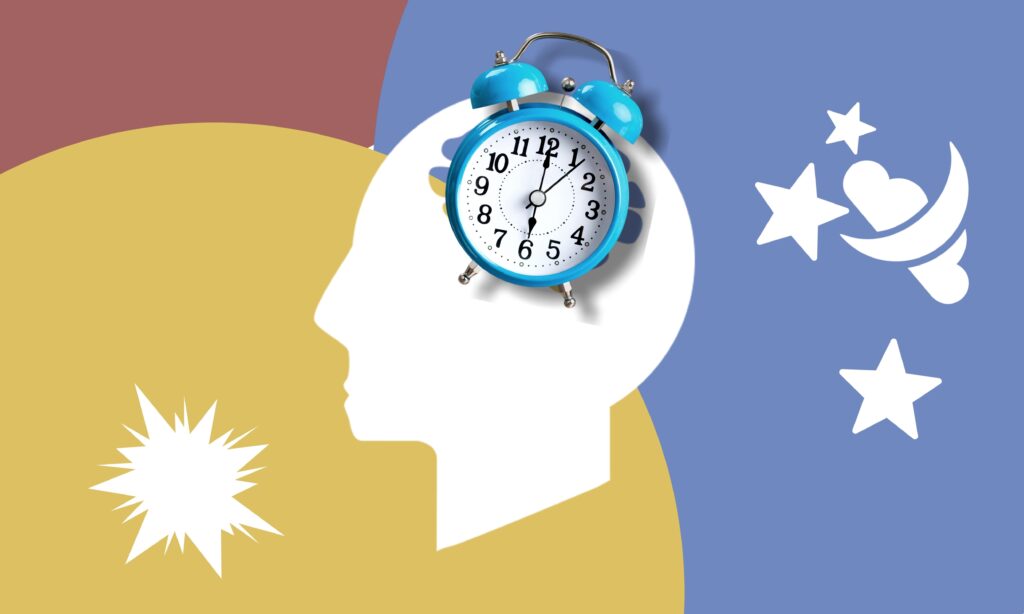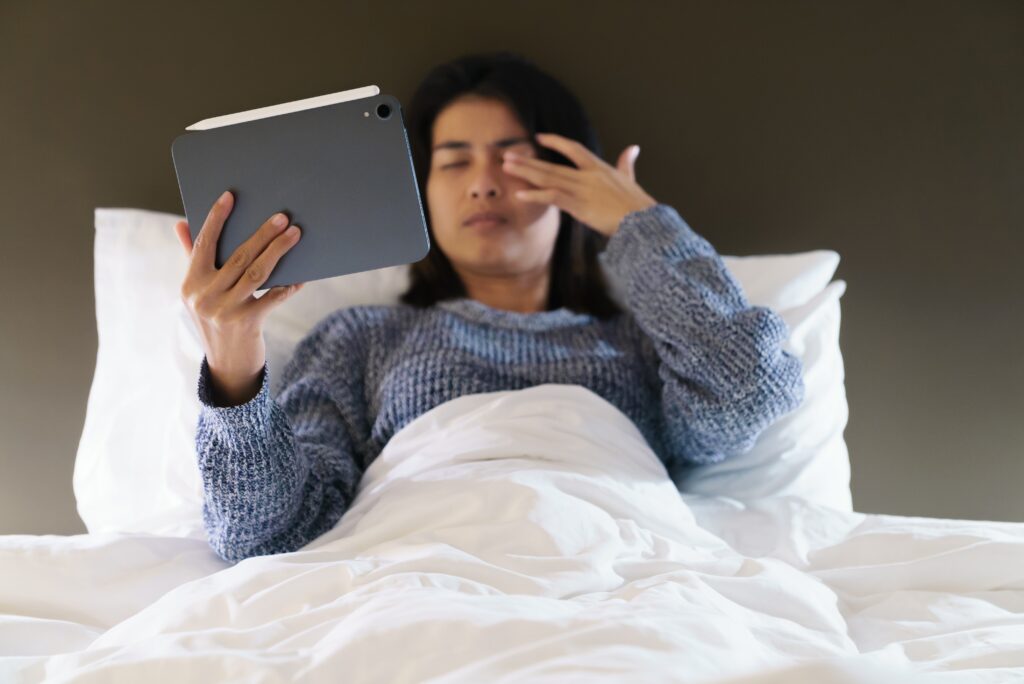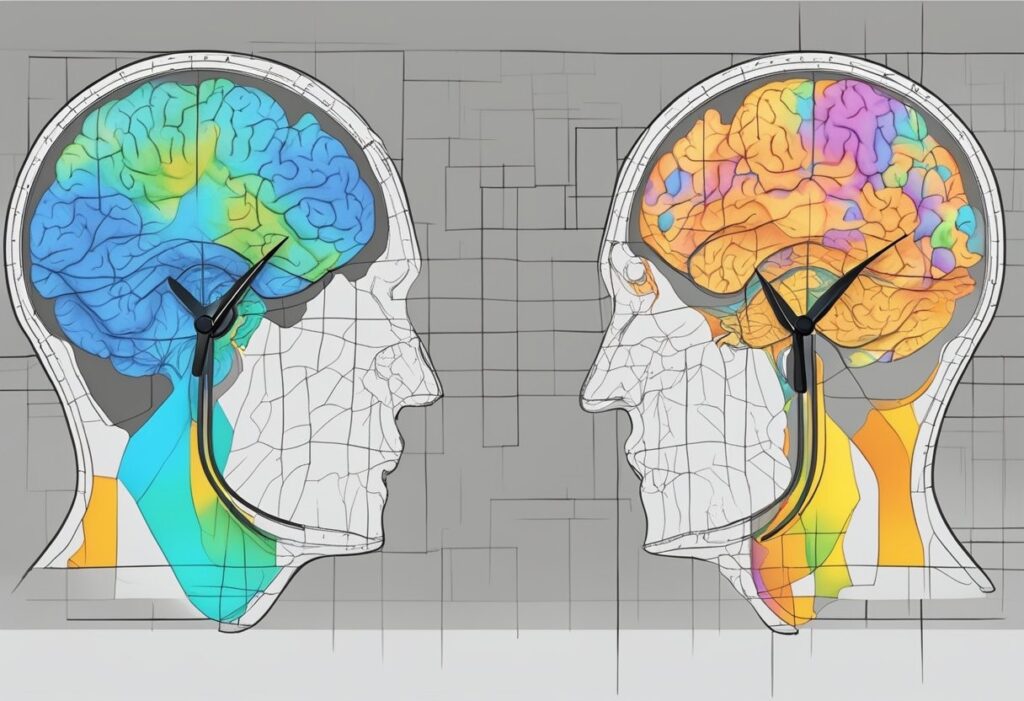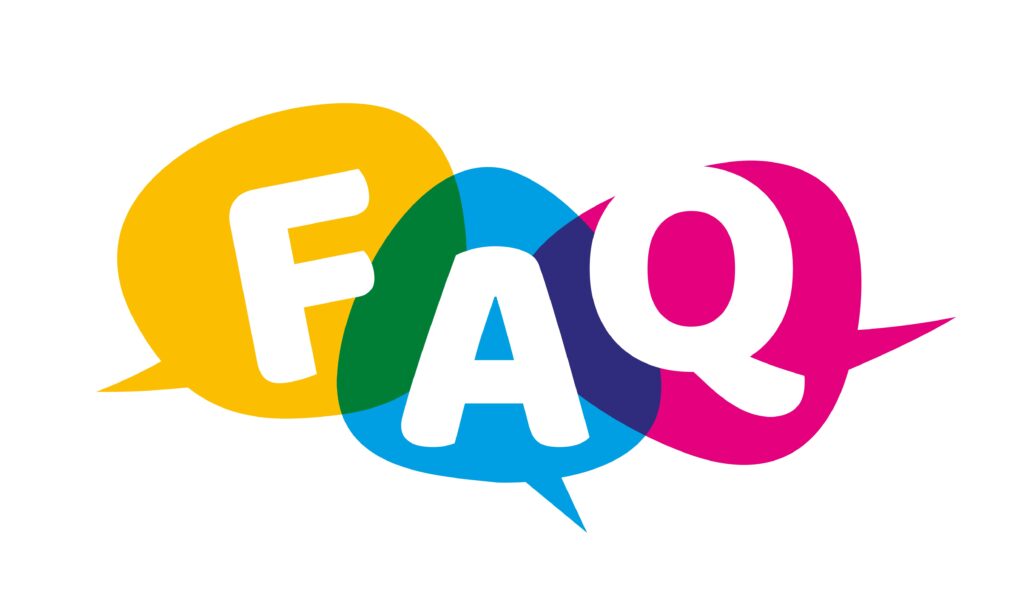Circadian rhythm sleep disorders involve disruptions in a person’s sleep-wake cycle, impairing their ability to sleep and wake at appropriate times. This internal clock, termed the circadian rhythm, guides sleep patterns, hormone release, eating habits, and other bodily functions. When this natural cycle falls out of sync with the external environment due to various factors, it can result in difficulty falling asleep, staying asleep, or waking up too early.
A range of circadian rhythm sleep disorders exist, including delayed sleep phase disorder, advanced sleep phase disorder, non-24-hour sleep-wake disorder, and irregular sleep-wake rhythm. Each disorder has unique challenges and impacts daily life, requiring tailored management strategies. Diagnosis typically involves a combination of medical history, sleep logs, and sometimes more precise methods like actigraphy or polysomnography.
Key Takeaways
- Circadian rhythm sleep disorders disrupt the synchronization between internal sleep-wake cycles and external cues.
- Various types of disorders exist, each with unique patterns of sleep disruption.
- Accurate diagnosis and tailored treatments are vital for managing these sleep disorders effectively.
Table of Contents
Understanding Circadian Rhythms

Circadian rhythms are fundamental biological processes that govern sleep-wake patterns and are influenced by environmental cues such as light.
Biological Clock and Circadian Cycle
The suprachiasmatic nucleus (SCN), a cluster of neurons in the brain, acts as the master regulator of circadian rhythms, often called the body’s internal clock. These rhythms are not random; they are genetically preset to align with a 24-hour cycle roughly, coordinating a wide range of body functions, including sleep, appetite, and hormone release. Melatonin, a hormone secreted by the pineal gland during darkness, is pivotal in signaling the body to prepare for sleep, thereby influencing the sleep-wake cycle tied to the circadian clock.
Influence of Light on Circadian Rhythms
Exposure to light is a critical factor in synchronizing the body’s circadian clock. Blue light is incredibly potent and abundant during daylight hours; it suppresses melatonin production and promotes alertness and wakefulness. Conversely, as natural light dims in the evening, melatonin production increases, preparing the body for sleep. Artificial lighting, exceptionally bright and blue-light emitting devices, can interrupt the natural cadence of the circadian cycle, leading to disorders if not appropriately managed. Balancing light exposure is crucial for the maintenance of healthy circadian rhythms.
Types of Circadian Rhythm Sleep Disorders
Circadian Rhythm Sleep Disorders (CRSD) are variations of sleep disturbances that occur when there is a misalignment between an individual’s internal biological clock and the external environment. These disorders impact not only the timing of sleep but also the quality and duration, affecting daily functioning.
Delayed Sleep-Wake Phase Disorder
Individuals with Delayed Sleep-Wake Phase Disorder experience significant delays in their sleep timing, making it difficult for them to fall asleep before the late night or early morning hours. They typically struggle to wake up in time for usual daily commitments, such as work or school.
Advanced Sleep-Wake Phase Disorder
Conversely, Advanced Sleep-Wake Phase Disorder is characterized by excessively early sleep onset and wake times. Affected people become sleepy in the late afternoon or early evening and may wake up before dawn, unable to return to sleep.
Irregular Sleep-Wake Rhythm Disorder
Irregular Sleep-Wake Rhythm Disorder presents a lack of a clear sleep pattern with numerous naps taken throughout 24 hours. No single main sleep episode can be easily identified, and the sleep-wake schedule may vary dramatically daily.
Non-24-Hour Sleep-Wake Rhythm Disorder
In Non-24-Hour Sleep-Wake Rhythm Disorder, the sleep-wake cycle lasts longer than 24 hours. This pattern leads to progressively later bedtimes and wake times, which seem to “travel” around the clock, causing significant challenges with social and professional activities.
Shift Work Sleep Disorder
People with Shift Work Sleep Disorder have trouble adjusting to a work schedule outside the typical 9-to-5 hours. It particularly affects those who rotate shifts or work at night, leading to insomnia or excessive sleepiness, which can impair job performance and safety.
Jet Lag Disorder
Jet Lag Disorder often affects travelers who cross multiple time zones rapidly by air. It manifests as trouble sleeping, daytime fatigue, difficulty concentrating, and general malaise as their internal clock tries to realign with local time.
Signs and Symptoms of Circadian Rhythm Sleep Disorders
Circadian Rhythm Sleep Disorders (CRSD) manifest symptoms associated with disruptions in an individual’s sleep-wake rhythm. The primary hallmark of CRSD is a mismatch between a person’s internal circadian clock and their external environment, leading to sleeping and waking at times that are out of sync with their daily schedule.
Common symptoms include:
- Difficulty falling asleep at conventional times
- Waking up frequently during the night
- Excessive daytime sleepiness despite ample sleep opportunities
- Inability to feel alert during typical awakening hours
- Sleep quality that feels non-restorative or insufficient
An array of behavioral indications can arise as a result of CRSD, some of which include:
- Challenges in maintaining attention or concentration
- Decreased cognitive function affecting memory and decision-making
- Feelings of depression or mood swings
- A consistent pattern of sleep disturbances across multiple days
Patients often report feeling out of sync with social and occupational obligations, exacerbating daytime sleepiness. It’s not uncommon for these disturbances to inflict significant distress or impairment in social, occupational, or other important areas of functioning.
Individuals may also experience a reduction in overall well-being and productivity due to the persistent misalignment of their circadian rhythm. This underscores the need for proper diagnosis and treatment for those affected by CRSD.
Causes and Risk Factors
Disruptions in circadian rhythms can be attributed to various causes and risk factors, ranging from genetic makeup to lifestyle choices. Understanding these elements is vital for identifying potential interventions.
Genetic Influences
Some individuals are predisposed to circadian rhythm disorders due to genetic conditions such as Smith-Magenis syndrome or Huntington’s disease. Specific genes affect the body’s biological clock, which can naturally predispose individuals to disrupted sleep patterns, even without external triggers.
Environmental Factors
Exposure to light plays a crucial role in regulating the circadian rhythm. Both natural and artificial light can significantly impact it. For instance, the risk for non-24-hour sleep-wake rhythm disorder is higher in conditions affecting eyesight, where natural light perception is impaired. Changes in the external environment, such as shift work or travel across time zones, can induce disorders like shift work disorder or jet lag.
Lifestyle and Behavior
Lifestyle changes and personal habits strongly influence circadian rhythm. Caffeine, alcohol, and nicotine can have disruptive effects. Additionally, irregular sleep schedules and heavy use of electronics before bedtime can alter sleep patterns due to the blue light exposure they emit. As people age, their circadian rhythms naturally shift, which may increase the risk of advanced sleep-wake phase disorder in older adults. At the same time, teenagers may be more susceptible to delayed sleep-wake phase disorder.
Diagnosis of Circadian Rhythm Sleep Disorders

Identifying a circadian rhythm sleep disorder involves a comprehensive medical assessment and sleep-tracking technologies. Accurate diagnosis is crucial to manage this medical condition effectively.
Medical Evaluation
Diagnosis begins with a thorough medical evaluation. Physicians gather information on the patient’s sleep habits, medical history, and potential sleep disturbances. A sleep diary is an essential tool in this process, where patients record details of their sleep patterns over a period of time. This diary provides insights into sleep timing, duration, and quality. Questions about daily routines and exposure to light can also help identify disruptions in the body’s natural sleep-wake cycle.
Sleep Studies and Actigraphy
Sleep studies, such as polysomnography, are often utilized to observe sleep cycles and diagnose sleep disorders. These studies monitor various physiological variables during sleep, which may indicate a circadian rhythm sleep disorder. Actigraphy, employing a wrist-worn device that tracks movement, complements the sleep study by providing data on sleep-wake patterns over extended periods. These tools can help confirm a diagnosis and guide subsequent treatment strategies.
Treatment Strategies
Effective management of circadian rhythm sleep disorders often requires a multifaceted approach, targeting the underlying causes and employing specific treatments. The following subsections outline the common therapies used in the treatment plans.
Light Therapy
Light therapy involves exposure to intense, bright light to help reset the circadian clock. Bright light therapy is typically administered using a light box that emits light mimicking natural sunlight, and it’s recommended to be used at specific times of the day to realign the body’s internal sleep-wake cycle. The timing and duration of the therapy are critical and should be personalized based on individual needs.
Melatonin Supplements and Medication
Melatonin supplements are over-the-counter options that can help adjust the body’s internal clock. They’re often utilized for conditions like delayed sleep phase syndrome. On the other hand, prescription medications like the melatonin receptor agonist tasimelteon or certain hypnotics and benzodiazepines, such as zolpidem and modafinil, may be prescribed to induce sleep or enhance daytime alertness, depending on the disorder treated.
Lifestyle and Sleep Hygiene
Improving sleep hygiene is a cornerstone in treating circadian rhythm sleep disorders. This includes consistent sleep schedules, creating a sleep-conducive environment, and avoiding stimulants before bedtime. Attention to lifestyle changes, such as regular exercise and controlled exposure to natural light, is significant in a successful treatment plan. Visit our post Sleep Hygiene: Essential Strategies for Better Sleep Quality – Sleep Health Network to learn more about Sleep Hygiene best practices.
Managing Sleep-Wake Cycles
Managing sleep-wake cycles involves establishing consistent routines that align with the body’s natural circadian rhythms. Patients with circadian rhythm sleep disorders may experience various symptoms, including daytime sleepiness and disrupted sleep patterns. Strategies for management encompass a range of treatments and lifestyle changes designed to stabilize sleep habits.
Sleep Schedule: Individuals are encouraged to set a fixed bedtime and wake-up time. Adherence to a regular schedule reinforces the body’s sleep-wake cycle, making it easier to fall asleep and wake up at the desired times.
- Bedtime Routine: Engage in calming activities before sleep to signal the body that it’s time to wind down.
- Exposure to Light: Natural light in the morning helps reset the circadian clock while minimizing exposure to blue light from screens in the evening, which aids in preparing for sleep.
Physical Activity: Regular exercise, particularly early in the day, can promote better sleep at night. However, vigorous exercise should be avoided close to bedtime as it can raise body temperature and increase alertness.
Environmental Control: Maintain a comfortable bedroom environment. This includes controlling light levels, reducing noise, and setting an appropriate room temperature.
Napping: Limit naps, especially in the late afternoon or evening, as they can affect nighttime sleep quality and disrupt the sleep cycle.
Individuals may notice improvements in their sleep through consistently applying these practices. For some, adjunctive treatments such as light therapy or medication may be necessary under the guidance of a healthcare provider.
Technological and Environmental Considerations

Technological advancements and environmental factors significantly influence circadian rhythm sleep disorders. Understanding their impact is essential in managing and improving these conditions.
Impact of Screens
Smartphones, tablets, and other devices emanate blue light, which has been recognized to suppress melatonin production. Limiting exposure to screens, especially in the hours leading up to bedtime, can assist in aligning the circadian rhythm with the natural sleep cycle.
- Devices to Avoid Before Sleep:
- Smartphones
- Tablets
- Computers
- Televisions
Importance of Bedroom Environment
Creating a conducive bedroom environment is vital for encouraging healthy sleep patterns. Dimming the lighting and mitigating noise pollution are crucial steps in fortifying the circadian rhythm against external disruptions.
- Recommended Bedroom Conditions:
- Light: Use of warm, low-intensity lighting
- Noise: Reduction of external and internal noise sources
- Temperature: Maintaining a comfortable and cool temperature
Advanced Chronobiology and Psychiatry

Chronobiology plays a pivotal role in understanding psychiatric conditions. It delves into how the body’s internal clock, or circadian rhythms, influences psychological health. Advanced Sleep Phase Syndrome (ASPS) is a prime example of an individual’s sleep-wake pattern shifting earlier, causing evening sleepiness and early morning awakenings.
Tables of Circadian Misalignment and Psychological Impacts
| Circadian Conditions | Impact on Psychiatry |
| ASPS | Depression, Anxiety |
| Shift Work Disorder | Mood Disorders |
| Irregular Sleep-Wake | Cognitive Dysfunction |
In psychiatry, ASPS may not just be a sleep-related issue but is often associated with mood disorders. Identifying and treating chronobiological misalignments contribute significantly to the management of psychiatric diseases. The development of tailored light exposure therapy, chronotherapy, and pharmacological interventions reflects the integration of chronobiology into psychiatric practices.
Key Concepts in Psychiatry & Chronobiology
- Chronobiology: Biological processes in sync with day-night cycles.
- Misalignment: Desynchronization between the body’s internal clock and external environment.
- Psychiatry: Deals with the diagnosis, treatment, and prevention of mental health disorders.
Chronobiological interventions are becoming integral in psychiatry, recognizing that conditions like ASPS can exacerbate or be a precursor to psychiatric diseases. As research advances, the importance of aligning circadian rhythms with an individual’s lifestyle and environmental cues is underscored, forging a path for novel therapeutic strategies in mental health care.
Preventive Measures and Lifestyle Changes

Maintaining a consistent sleep schedule is crucial in preventing circadian rhythm sleep disorders. Individuals should aim to go to bed and wake up simultaneously every day, even on weekends, to help regulate their sleep-wake cycle. Exposure to natural light during the day and minimizing light exposure in the evening can reinforce the body’s natural rhythms.
It is also beneficial to create a bedtime routine that promotes relaxation. This might include activities such as reading or taking a bath. Ensure the sleep environment is quiet, cool, and comfortable to enhance sleep quality. People should avoid stimulants like caffeine and electronic devices close to bedtime, as these can disrupt sleep patterns.
Regular physical activity has been shown to improve sleep quality, but vigorous exercise close to bedtime should be avoided. A sleep diary may help individuals and healthcare providers identify patterns or behaviors contributing to sleep-wake cycle disorders.
Adapting meal times can also impact circadian rhythms. Research suggests that eating closer to bedtime can negatively affect sleep quality and disturb the sleep-wake cycle. Therefore, they should have their last meal a few hours before bed.
Strategic napping may be useful for those with sleep-wake phase disorder or other circadian rhythm abnormalities. However, it is important not to take naps too late in the day, as this may make it difficult to fall asleep at night.
| Lifestyle Change | Benefits for Sleep Disorders |
| Consistent Sleep Schedule | It helps regulate the sleep-wake cycle |
| Exposure to Natural Light | Reinforces the body’s natural circadian rhythms |
| Relaxing Bedtime Routine | Encourages onset of sleep |
| Sleep Environment Optimization | Enhances comfort and reduces sleep disruptions |
| Controlled Exposure to Stimulants | Prevents delay in sleep onset |
| Timely Physical Activities | Promotes better sleep quality |
| Appropriate Meal Timing | Aligns with circadian rhythm for better sleep quality |
| Strategic Napping | Can compensate for lost sleep without disrupting the cycle |
By integrating these preventative measures and lifestyle changes, individuals may improve their sleep quality and mitigate the effects of circadian rhythm sleep disorders.
Emerging Research and Treatments

Recent studies have highlighted potential strategies for addressing circadian rhythm sleep-wake disorders (CRSWDs). One area of promise lies in light therapy, where controlled exposure to artificial light influences the body’s circadian rhythms. Research published in the National Center for Biotechnology Information discusses neurobiological underpinnings and various treatment modalities, including the impact of light on circadian regulation.
Pharmacological interventions are advancing, with melatonin and melatonin agonists playing a significant role in treatment. These substances aid in realigning the circadian clock, especially in conditions like delayed sleep-wake phase disorder. Emerging treatments aim to sync the internal clock with the external environment, a challenge discussed in the Lancet, focusing on sleep timing.
Research continues to investigate genetic influences on CRSWDs. Nature has published findings on the genetics of circadian rhythms, emphasizing the need for personalized medicine approaches to these disorders.
- Chronotherapy: This method involves gradual changes in sleep time and has shown effectiveness in certain CRSWDs.
- Cognitive-behavioral therapy (CBT): CBT for insomnia can also be tailored for CRSWDs, helping patients alter beliefs and behaviors disrupting sleep patterns.
- Technological innovations: Devices and apps to track sleep-wake patterns offer data-driven insights into personalized treatment plans, aligning with the research presented in Frontiers in Neuroscience about defining sleep disruption.
The research field is poised to develop more refined treatments for CRSWDs, informed by a growing understanding of the interplay between behavioral factors, neurobiology, and genetics.
Support and Resources
Individuals grappling with circadian rhythm sleep disorders can leverage many support resources for assistance and guidance. Patients must seek credible and tailored information to their specific condition.
- Organizations: The Circadian Sleep Disorders Network, a dedicated nonprofit entity, offers a support system and valuable information that can significantly improve patient lives. Its focus is on raising awareness and extending support to those affected.
- Educational Materials: Stanford Medicine | Center for Sleep and Circadian Sciences provides a comprehensive overview of circadian rhythm sleep disorders, including types and treatments, backed by trusted healthcare providers.
- Medical Institutions: Renowned clinics, such as the Cleveland Clinic, give patients in-depth knowledge about these disorders, including their effect on daily life and possible disruptions to the natural sleep-wake cycle.
- Health Publications: For those seeking to comprehend the science behind their conditions, authoritative websites like Verywell Mind discuss the types, causes, and coping mechanisms associated with circadian rhythm sleep disorders.
- Advocacy and Research: Engaging with bodies promoting sleep research and advocacy can be helpful. Among these resources, the American Academy of Sleep Medicine contributes significant research and education, particularly regarding Irregular Sleep-Wake Rhythm Disorder.
Patients are encouraged to utilize these resources to better understand their condition, potential treatments, and effective coping strategies. Family and friends may also benefit from such materials to better support their loved ones.
Frequently Asked Questions

This section addresses commonly asked questions about circadian rhythm sleep disorders, offering concise answers based on current medical understanding.
What are the common symptoms of a circadian rhythm sleep disorder?
Individuals with a circadian rhythm sleep disorder often experience persistent difficulty falling asleep or waking up at desired or socially appropriate times. The symptoms may include insomnia, excessive daytime sleepiness, and a disrupted sleep-wake pattern that conflicts with daily activities.
How can circadian rhythm sleep disorders be treated?
Treatment for circadian rhythm sleep disorders may involve lifestyle and behavior modifications, such as maintaining a consistent sleep schedule and light therapy. Medication or melatonin supplements are sometimes used to realign the internal body clock with the external environment.
What are the differences between circadian rhythm sleep disorders and insomnia?
Unlike insomnia, which is characterized by difficulty falling or staying asleep, circadian rhythm sleep disorders specifically result from misalignments between an individual’s internal clock and the external environment. These disorders lead to sleep disturbances based on the timing of sleep rather than the quality or quantity.
What factors contribute to the development of circadian rhythm sleep disorders?
Genetic predisposition, disruptions in the sleep environment, shift work, rapid time zone travel (jet lag), and exposure to artificial light at night are factors contributing to the development of circadian rhythm sleep disorders.
Are there specific tests for diagnosing circadian rhythm sleep disorders?
To diagnose circadian rhythm sleep disorders, doctors may use a combination of sleep diaries, actigraphy (monitoring movement with a wearable device), and sometimes polysomnography (an overnight sleep study) to assess sleep patterns and rule out other sleep disorders.
In what ways can ADHD affect circadian rhythm and sleep patterns?
Individuals with ADHD might experience disturbances in circadian rhythm and sleep patterns due to irregularities in sleep hygiene, increased exposure to screen time before bed, or as part of the disruptions in neurobiological systems that regulate sleep and circadian rhythms.



